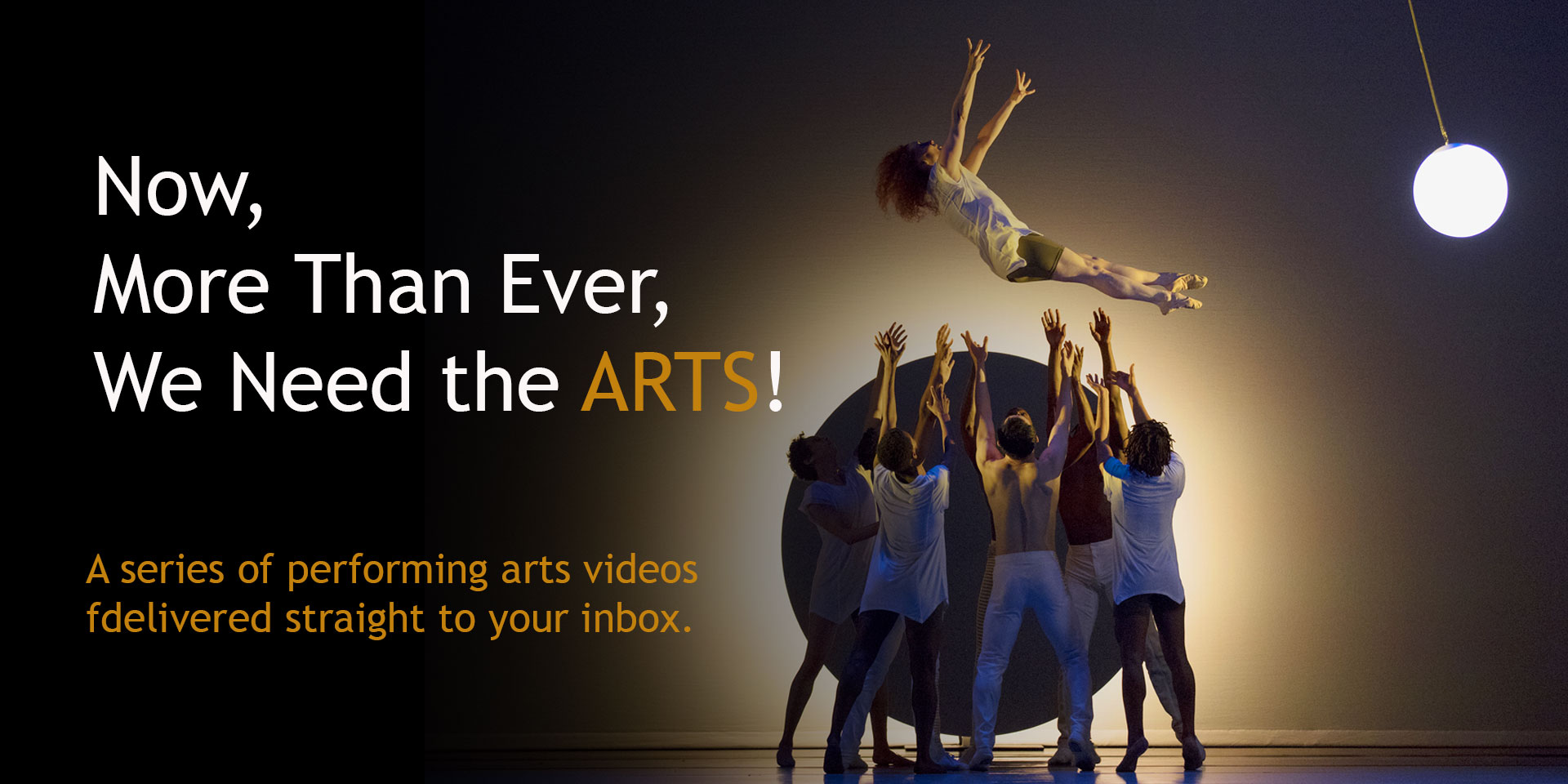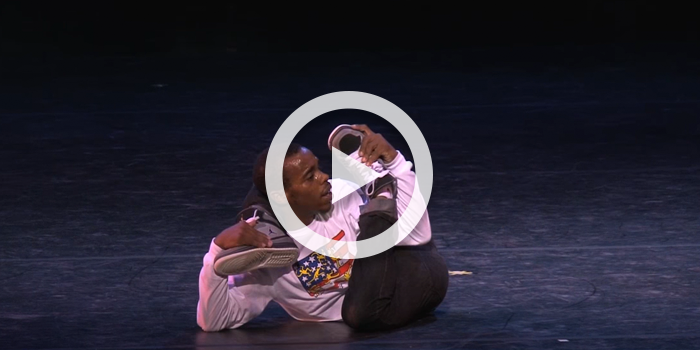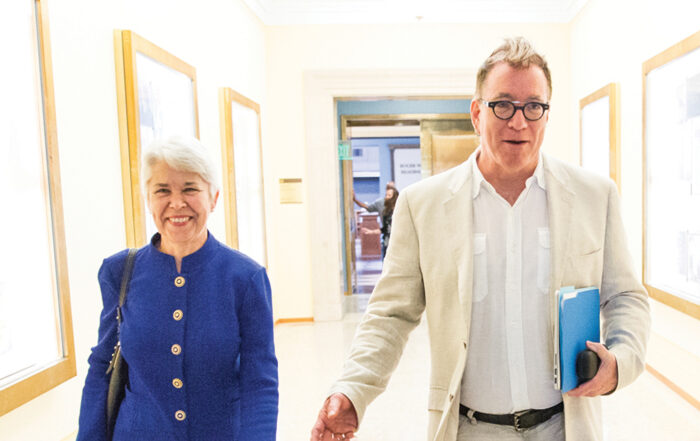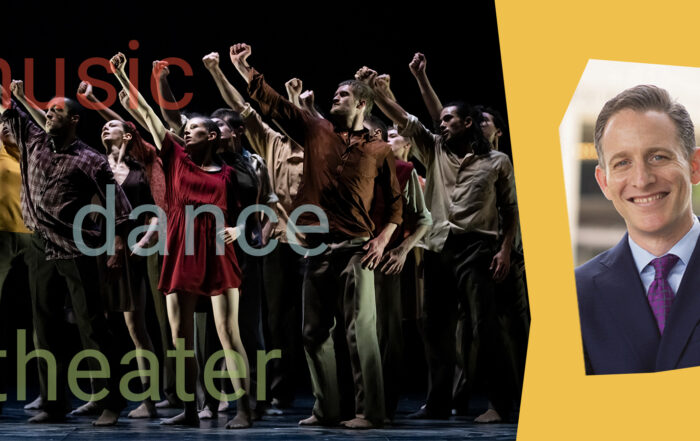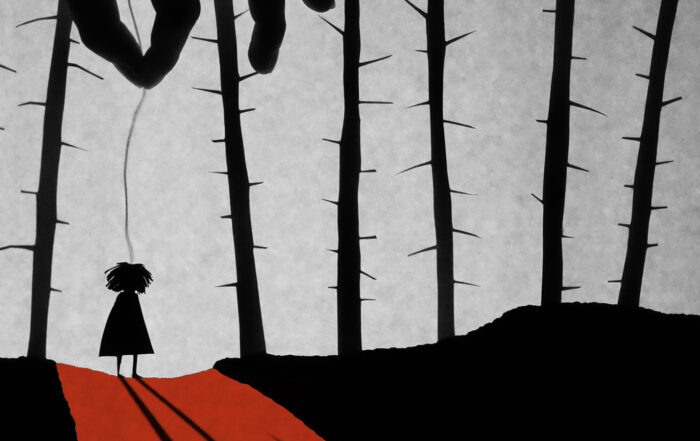In this issue: “Malaika” by vocalist Miriam Makeba; Monteverdi’s “Adagiati, Poppea…Oblivion soave” from L’incoronazione di Poppea, sung by mezzo-soprano Anne Sofie von Otter, Excerpts from John Adams’ El Niño, sung by mezzo-soprano Lorraine Hunt Lieberson; choreographer Maurice Béjart’s Boléro, danced by Sylvie Guillem; Judgment Scene from Verdi’s Aida, sung by mezzo-soprano Shirley Verrett; “Happy Days Are Here Again”/“Get Happy” sung by Barbra Streisand and Judy Garland
Now, More Than Ever: Issue 11
With one exception, the artists featured in today’s Now, More Than Ever selections rank among my very favorite vocalists—and even dancer Sylvie Guillem displays many of the same skills as a great singer in her unforgettable work. Theoretically, all of us can sing. But when we try, most of us (certainly I do) become instantly aware of our overwhelming limitations. Breath control, pitch, quality of tone, etc.; there’s a long list of things that must be in place to produce a beautiful sound. And even having all of those factors securely under control does not guarantee a memorable artistic experience. These vocalists possess that rare power to combine control with spontaneity, experience with curiosity, and security with risk; an inability to be content to repeat a successful performance of the past; and a willingness to challenge themselves to find something new—something alive—in every moment on stage.
“Malaika”
Miriam Makeba, vocalist
Miriam Makeba was many things—singer, songwriter, actress, civil rights activist, United Nations ambassador, and probably the first African global superstar—so it’s ironic that “Malaika,” one of this South African’s trademark songs, is actually an East African tune, sung in Swahili (a language she didn’t speak) and written in 1945. And what’s more, it was actually taught to her by someone backstage at a 1964 concert in San Francisco. Makeba’s was one of the more fascinating lives of the 20th century. Born extremely poor in South Africa during the days before the formalization of Apartheid, she began to sing professionally in the 1950s, and was accomplished enough to win a small but memorable role in the 1959 film Come Back, Africa. International attention followed, with Makeba moving to New York City, becoming increasingly active politically, and recording her first solo album in 1960. That same year, her public criticism of South Africa’s white-minority government led to the loss of her citizenship, something she learned about only while trying to return to her country for her mother’s funeral. Makeba’s luminous talent, clearly on display in this enchanting video, provides ample justification for her popular nickname, “Mama Africa.”
Monteverdi: “Adagiati, Poppea…Oblivion soave” from L’incoronazione di Poppea
Anne Sofie von Otter, mezzo-soprano
I’m a huge fan of Anne Sofie von Otter, who is easily one of the most versatile and adventurous performers of our time. It’s no surprise that she has enjoyed success as an opera and song recital star, but she has also made convincing forays into the worlds of pop music and jazz. Based on personal experience, I’m happy to tell you that she’s one of the most open and truly classy musicians around. This section from Monteverdi’s L’incoronazione di Poppea would have been sung by a man in drag during the time of its composition; and as a character song, it was not intended to be sung beautifully. But in the hands of an artist as gifted as von Otter, I think it’s one of the most sublime moments in the entire opera. The character of Poppea is a courtesan with whom Nero has fallen in love (he wants to crown her Empress, much to the dismay of his wife), and here, Arnalta, Poppea’s aged nurse and confidante, sings a lullaby to help ease her to sleep (at a pivotal moment). I love this arrangement. Monteverdi’s score indicates only the vocal line and bass, leaving the exact instrumentation up to the performers. And here, the choices of theorbo (Jakob Lindberg) and portative organ (Jory Vinikour) seem a perfect match to both words and music.
John Adams: excerpts from El Niño
Lorraine Hunt Lieberson, mezzo-soprano
John Adams’ ecstatic opera-oratorio El Niño, a fantastical and compelling reimagination of the birth of Jesus, is easily one of my favorite pieces by this incomparable—and local—composer. The original production in 2000, at Paris’ Théâtre du Châtelet, was a memorable event, featuring soloists including Lorraine Hunt Lieberson and Dawn Upshaw, assorted vocal ensembles, and the Deutsches Symphonie-Orchester, with Kent Nagano conducting. Here’s a wonderful short section (the second half of “La Anunciación,” followed by “For with God no thing shall be impossible” and “The babe leaped in her womb”) featuring Lieberson in one of her most memorable roles. (I was lucky to have seen her many times before her untimely death in 2006 and fondly remember introducing her to Sir Colin Davis, who, like so many others, came to treasure both the singer and her artistry.) Lieberson had deep roots in the Bay Area, growing up here and establishing an important, active career, notably through her association with Philharmonia Baroque Orchestra. Watching her in the original Peter Sellars (also the work’s librettist) production, you’ll see a truly magnetic performer operating on a very high level, indeed. (Treat yourself to a second of her legendary performances in this clip from another Sellars production, of Handel’s Theodora at Glyndebourne in 1996, with the Orchestra of the Age of Enlightenment, conducted by William Christie.)
Boléro
Sylvie Guillem, dancer
Maurice Béjart, choreographer
It’s hard to imagine a more dramatic setting than Tokyo on New Year’s Eve 2015, when the incomparable Sylvie Guillem danced for the final time in a performance synchronized to end at the stroke of midnight. And what a thrill that she chose to leave us with this historic production of choreographer Maurice Béjart’s Boléro (1960), performed to Ravel’s classic score. Guillem burst onto the international scene at the age of 19—more than 30 years before this performance—as the youngest-ever étoile of the Paris Opera Ballet (1984–89), before becoming a principal guest artist with the Royal Ballet in London. A second brilliant career followed as she conquered the world of contemporary dance. Here she never stops moving throughout the 15-minute duration of Béjart’s masterpiece, often in very subtle, subjective ways. I love this excerpt from a 1990 New York Times review:
The ballet is a remarkable image of awakening desire. Miss Guillem performed its sinuous caressing and beckoning movements as if she were making incantatory gestures as a high priestess of an erotic ritual. Gazing into space with sphinxlike mystery, she appeared to symbolize all passion rather than to portray a specific passionate woman. It was one of the most compelling interpretations of “Bolero” witnessed by this critic since he first saw it performed by Mr. Béjart’s own company in Brussels in 1964, when it featured Duska Sifnios, the Yugoslav ballerina for whom it was created in 1960.
We’re lucky that this magnetic performance was captured for broadcast on Japanese television. It is utterly mesmerizing.
Verdi: Judgement Scene from Aida
Shirley Verrett, mezzo-soprano
I’m one of those people who often leave a performance of Verdi’s Aida thinking, “That really should have been called Amneris,” so spellbinding is the music given to the daughter of the King of Egypt, in love with Radamès (although he does not return her feelings). That’s especially true in this extraordinary scene, which follows her last meeting with the military commander. It’s easily one of the most compelling moments in all of opera, and in the hands of such a fierce singing actress, it truly makes the hair on the nape of your neck stand on end. Shirley Verrett, the great American mezzo who—through sheer force of will, one imagines—successfully transitioned to soprano roles, enjoyed an illustrious career that spanned four decades (the late 1960s through the 1990s); she was particularly famous for her portrayals of the heroines of Donizetti and Verdi. While Verrett tackled both lead female roles in Aida, she rarely performed Amneris (only once at the Met), so we’re fortunate to have this thrilling clip from a production mounted by the BBC in 1971.
“Happy Days Are Here Again”/“Get Happy”
Barbra Streisand & Judy Garland, vocalists
It can be hard to imagine, but there was actually a time when comparatively few people had much familiarity with Barbra Streisand. At the time of this appearance on Judy Garland’s short-lived television series from the early 1960s, she had not yet triumphed over Broadway in Funny Girl, although the buzz was certainly building. No wonder, given the natural talent of this 21-year-old phenom—who, after all, had only been singing seriously for three years at the time of this taping. I owe a debt of gratitude to Amy Cranch at University Development and Alumni Relations for bringing this clip to my attention (how it had escaped my notice until now, I’ll never understand). In it, you find two towering talents (and egos!) meeting, seemingly, for the first time; in Amy’s words, “we get to witness funny, authentic banter and a deep mutual admiration. It takes my breath away at 2:48.” If you have the time, it’s worth watching the entire program, which features, among other things, a very young Liza Minnelli. And when Ethel Merman is pulled from the studio audience about 30 minutes in, to sing “There’s No Business Like Show Business,” you’ll experience one of those very rare instances when someone actually steals the stage right out from under Streisand’s—not to mention Garland’s—feet. (It’s both hilarious and slightly scary!)
Now, More Than Ever Full Playlist
Now, More Than Ever Spotify Playlist


